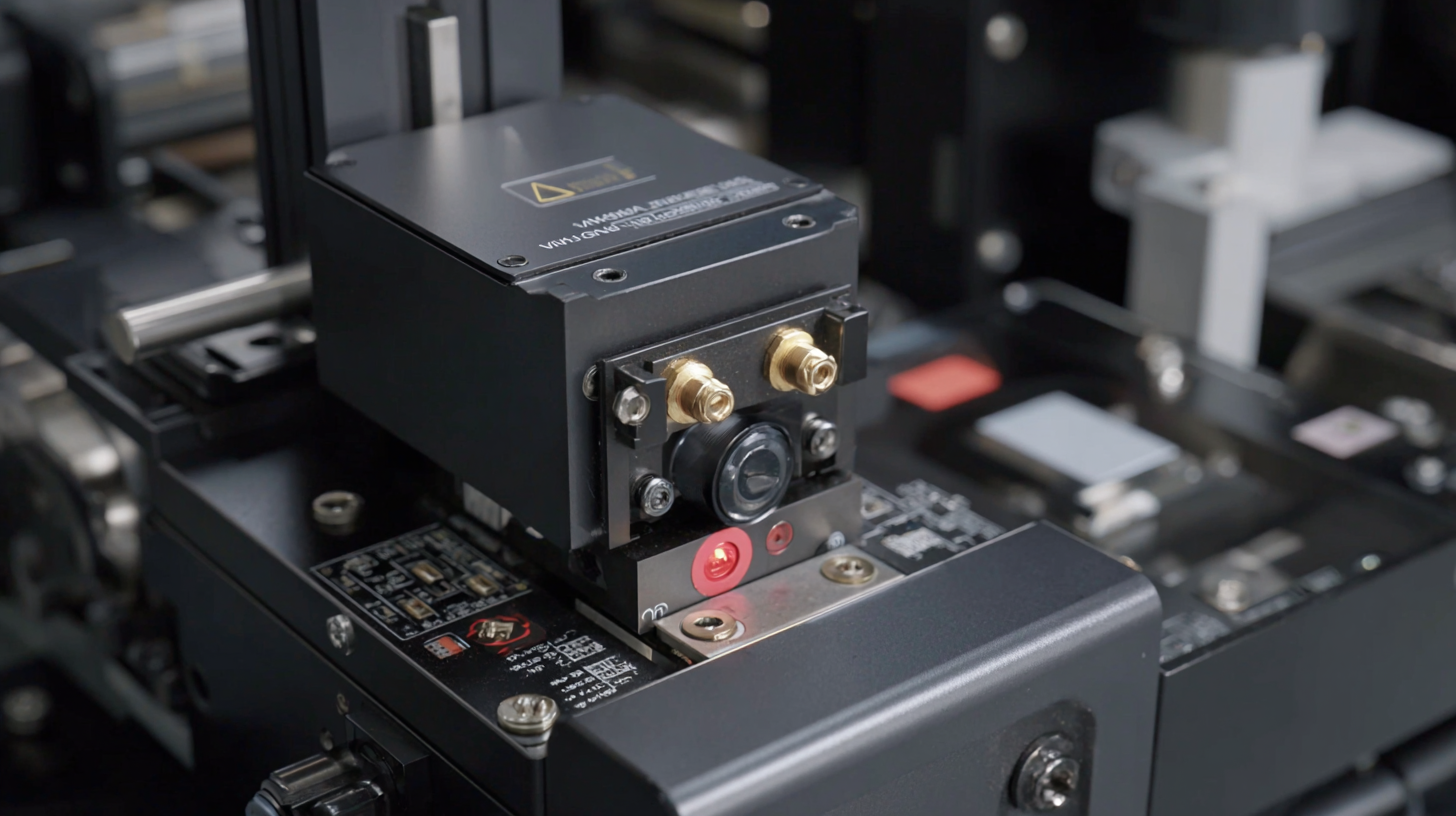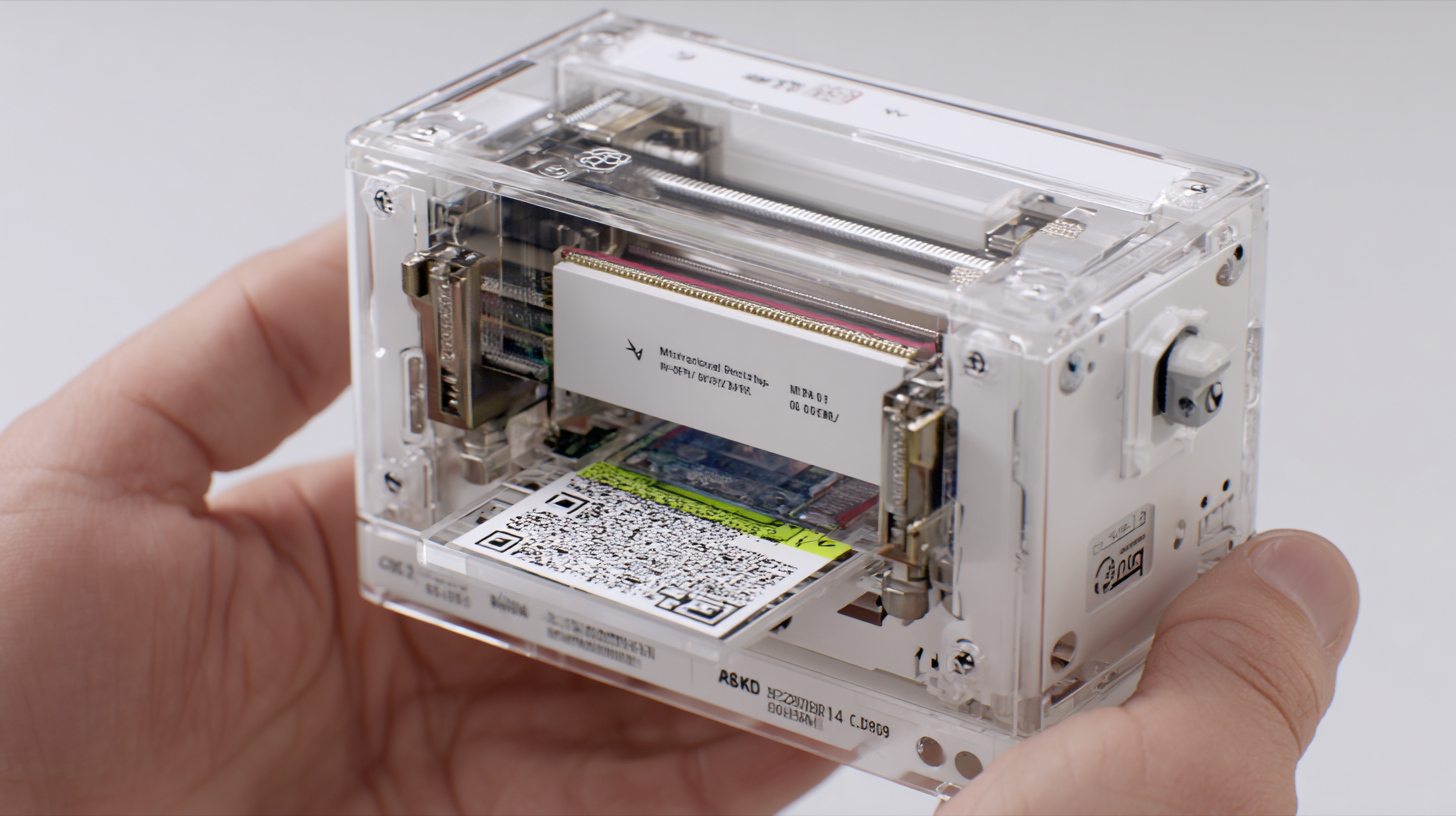In the rapidly evolving landscape of global manufacturing, the mini heat printer industry has emerged as a key player, contributing significantly to various sectors, including retail, logistics, and healthcare. According to a recent market analysis by MarketsandMarkets, the mini heat printer market is expected to grow from USD 2.1 billion in 2021 to over USD 4 billion by 2026, driven by the increasing demand for compact and efficient printing solutions. As China continues to dominate the manufacturing sector, prioritizing quality and compliance has become paramount. The emphasis on quality, encapsulated in the phrase "Quality Focused, Chinese Manufacturing, Leading Global Exports," reflects the industry's commitment to meeting international standards and ensuring that mini heat printers not only meet consumer expectations but also adhere to stringent global regulations.

This blog will explore the critical role of global standards in mini heat printer manufacturing, emphasizing the balance between innovation and quality assurance in a competitive market.
In the realm of mini heat printer manufacturing, understanding global standards is crucial for ensuring product quality and compliance across various industries. Different regions may have specific regulations and certifications that manufacturers must adhere to, such as CE marking in Europe or FCC compliance in the United States. These standards not only ensure safety and reliability but also facilitate smoother international trade by harmonizing expectations across borders.
To maintain compliance, manufacturers should conduct regular audits of their production processes and quality control systems. Implementing a robust quality management system (QMS) will help identify areas for improvement and ensure adherence to the required standards. Additionally, collaborating with third-party certification bodies can provide valuable insights into compliance requirements and streamline the certification process.
Tip: When choosing materials for mini heat printers, always opt for those that meet international safety standards. This practice not only enhances the durability of the product but also assures customers of its reliability. Another tip is to invest in training for your workforce about the latest industry standards; knowledgeable staff is essential in maintaining compliance and quality in manufacturing processes.
This chart illustrates the compliance levels of mini heat printers across different global standards such as ISO 9001, ISO/IEC 27001, and RoHS. The data reflects the percentage of manufacturers achieving compliance in 2023.
In the contemporary landscape of business process outsourcing (BPO), mastering quality control compliance is paramount for building and maintaining client trust. According to a recent industry report, organizations that prioritize compliance can see a 30% increase in client retention rates. The importance of adhering to rigorous quality standards is underscored by the need for BPO firms to align their operations with the expectations set forth by international regulatory frameworks. This alignment not only ensures quality deliverables but also mitigates risks associated with non-compliance, which can lead to significant financial penalties.

Moreover, the introduction of emerging technologies poses new challenges and opportunities for compliance across various sectors. As industries evolve, the ability to adapt to new compliance standards is crucial. For instance, the food industry is currently navigating the complexities of the Food Safety Modernization Act (FSMA), with deadlines approaching for full compliance measures. Engaging in proactive compliance strategies, such as implementing advanced computer modeling and sourcing consulting services, can streamline operations, enhance traceability, and ensure adherence to necessary regulations. In this fast-paced environment, staying ahead of compliance challenges is key to fostering innovation while safeguarding product integrity.
In the rapidly evolving landscape of mini heat printer manufacturing, adhering to key regulations is crucial to ensure quality and compliance. One of the primary regulations impacting the production of these devices is the International Electrotechnical Commission (IEC) standards, which provide guidelines for electrical safety and electromagnetic compatibility. By conforming to IEC standards, manufacturers can prevent potential hazards and guarantee that their products operate efficiently within various environments.
Another significant regulation is the Restriction of Hazardous Substances (RoHS) directive, which limits the use of specific hazardous materials in electronic devices. Compliance with RoHS not only protects the environment but also enhances the safety of consumers using mini heat printers. Additionally, certifications such as CE marking in Europe and FCC compliance in the United States serve to verify that mini heat printers meet essential safety and performance criteria, allowing for smoother entry into different markets and instilling consumer confidence in product quality. These regulations underscore the importance of maintaining high standards in manufacturing processes while promoting responsible production practices across industries.

In the rapidly evolving landscape of mini heat printer manufacturing, adhering to international standards is crucial for ensuring quality and compliance across various industries. According to a report by MarketsandMarkets, the global mini printer market is projected to reach USD 3.4 billion by 2025, highlighting the increasing demand for these devices. To meet this demand while maintaining high manufacturing standards, companies must adopt best practices such as leveraging ISO 9001 quality management systems. This ensures that every product not only meets customer specifications but also complies with regulatory requirements, minimizing risks associated with non-compliance.
Furthermore, implementing Lean Manufacturing principles can significantly enhance operational efficiency in mini heat printer production. A study from the Association for Manufacturing Excellence indicates that organizations embracing Lean methodologies can improve their productivity by up to 25%. By streamlining processes, reducing waste, and optimizing resource utilization, manufacturers can ensure that their products are not only cost-effective but also uphold the highest standards of quality. This dual focus on compliance and efficiency positions companies to thrive in a competitive marketplace, ultimately benefiting consumers through better products and services.
| Standard | Description | Industry Impacted | Compliance Requirement | Best Practice |
|---|---|---|---|---|
| ISO 9001 | Quality Management Systems | Manufacturing, Service | Annual audits | Regular training and documentation review |
| IEC 60601 | Medical Electrical Equipment | Healthcare | Risk management documentation | Conduct thorough risk assessments |
| RoHS | Restriction of Hazardous Substances | Electronics, Manufacturing | Material composition disclosures | Implement a material compliance management system |
| UL Certification | Product Safety | Consumer Electronics | Periodic testing and re-evaluation | Continuous quality control processes |
| CE Marking | Conformity to European Standards | Various European Industries | Technical file maintenance | Create a detailed documentation process |
The mini heat printer industry is witnessing remarkable innovations aimed at enhancing quality and compliance across multiple sectors. As technology advances, manufacturers are adopting automated calibration techniques, which have been shown to reduce printing errors by up to 30%, according to a recent report by TechMarket Insights. Additionally, the integration of advanced thermal management systems has enabled printers to maintain optimal performance even in demanding environments, setting new standards in user satisfaction.
Tips for maintaining quality in your mini heat printer include regularly updating the firmware to benefit from the latest performance enhancements and ensuring the printing surface is clean to avoid smudges and misprints. Furthermore, using high-quality thermal paper can significantly impact print longevity and clarity, with recent studies revealing that quality paper can extend the lifespan of printed materials by over 50%.
Moreover, manufacturers are increasingly focusing on environmentally friendly processes and materials. A recent analysis by GlobalTech Review highlighted that 65% of consumers prefer products that utilize sustainable practices. This shift not only meets the demand for compliance with global environmental standards but also opens new avenues for innovation in the mini heat printer market.
